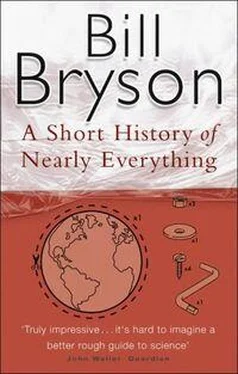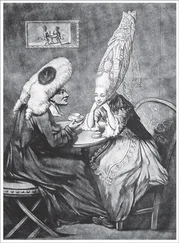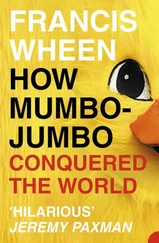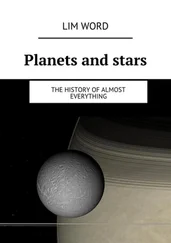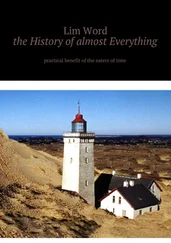Marsh, the elder of the two by eight years, was a retiring and bookish fellow, with a trim beard and dapper manner, who spent little time in the field and was seldom very good at finding things when he was there. On a visit to the famous dinosaur fields of Como Bluff, Wyoming, he failed to notice the bones that were, in the words of one historian, “lying everywhere like logs.” But he had the means to buy almost anything he wanted. Although he came from a modest background-his father was a farmer in upstate New York-his uncle was the supremely rich and extraordinarily indulgent financier George Peabody. When Marsh showed an interest in natural history, Peabody had a museum built for him at Yale and provided funds sufficient for Marsh to fill it with almost whatever took his fancy.
Cope was born more directly into privilege-his father was a rich Philadelphia businessman-and was by far the more adventurous of the two. In the summer of 1876 in Montana while George Armstrong Custer and his troops were being cut down at Little Big Horn, Cope was out hunting for bones nearby. When it was pointed out to him that this was probably not the most prudent time to be taking treasures from Indian lands, Cope thought for a minute and decided to press on anyway. He was having too good a season. At one point he ran into a party of suspicious Crow Indians, but he managed to win them over by repeatedly taking out and replacing his false teeth.
For a decade or so, Marsh and Cope’s mutual dislike primarily took the form of quiet sniping, but in 1877 it erupted into grandiose dimensions. In that year a Colorado schoolteacher named Arthur Lakes found bones near Morrison while out hiking with a friend. Recognizing the bones as coming from a “gigantic saurian,” Lakes thoughtfully dispatched some samples to both Marsh and Cope. A delighted Cope sent Lakes a hundred dollars for his trouble and asked him not to tell anyone of his discovery, especially Marsh. Confused, Lakes now asked Marsh to pass the bones on to Cope. Marsh did so, but it was an affront that he would never forget.
It also marked the start of a war between the two that became increasingly bitter, underhand, and often ridiculous. They sometimes stooped to one team’s diggers throwing rocks at the other team’s. Cope was caught at one point jimmying open crates that belonged to Marsh. They insulted each other in print and each poured scorn on the other’s results. Seldom-perhaps never-has science been driven forward more swiftly and successfully by animosity. Over the next several years the two men between them increased the number of known dinosaur species in America from 9 to almost 150. Nearly every dinosaur that the average person can name-stegosaurus, brontosaurus, diplodocus, triceratops-was found by one or the other of them. [12]Unfortunately, they worked in such reckless haste that they often failed to note that a new discovery was something already known. Between them they managed to “discover” a species called Uintatheres anceps no fewer than twenty-two times. It took years to sort out some of the classification messes they made. Some are not sorted out yet.
Of the two, Cope’s scientific legacy was much the more substantial. In a breathtakingly industrious career, he wrote some 1,400 learned papers and described almost 1,300 new species of fossil (of all types, not just dinosaurs)-more than double Marsh’s output in both cases. Cope might have done even more, but unfortunately he went into a rather precipitate descent in his later years. Having inherited a fortune in 1875, he invested unwisely in silver and lost everything. He ended up living in a single room in a Philadelphia boarding house, surrounded by books, papers, and bones. Marsh by contrast finished his days in a splendid mansion in New Haven. Cope died in 1897, Marsh two years later.
In his final years, Cope developed one other interesting obsession. It became his earnest wish to be declared the type specimen for Homo sapiens -that is, that his bones would be the official set for the human race. Normally, the type specimen of a species is the first set of bones found, but since no first set of Homo sapiens bones exists, there was a vacancy, which Cope desired to fill. It was an odd and vain wish, but no one could think of any grounds to oppose it. To that end, Cope willed his bones to the Wistar Institute, a learned society in Philadelphia endowed by the descendants of the seemingly inescapable Caspar Wistar. Unfortunately, after his bones were prepared and assembled, it was found that they showed signs of incipient syphilis, hardly a feature one would wish to preserve in the type specimen for one’s own race. So Cope’s petition and his bones were quietly shelved. There is still no type specimen for modern humans.
As for the other players in this drama, Owen died in 1892, a few years before Cope or Marsh. Buckland ended up by losing his mind and finished his days a gibbering wreck in a lunatic asylum in Clapham, not far from where Mantell had suffered his crippling accident. Mantell’s twisted spine remained on display at the Hunterian Museum for nearly a century before being mercifully obliterated by a German bomb in the Blitz. What remained of Mantell’s collection after his death passed on to his children, and much of it was taken to New Zealand by his son Walter, who emigrated there in 1840. Walter became a distinguished Kiwi, eventually attaining the office of Minister of Native Affairs. In 1865 he donated the prime specimens from his father’s collection, including the famous iguanodon tooth, to the Colonial Museum (now the Museum of New Zealand) in Wellington, where they have remained ever since. The iguanodon tooth that started it all-arguably the most important tooth in paleontology-is no longer on display.
Of course dinosaur hunting didn’t end with the deaths of the great nineteenth-century fossil hunters. Indeed, to a surprising extent it had only just begun. In 1898, the year that fell between the deaths of Cope and Marsh, a trove greater by far than anything found before was discovered-noticed, really-at a place called Bone Cabin Quarry, only a few miles from Marsh’s prime hunting ground at Como Bluff, Wyoming. There, hundreds and hundreds of fossil bones were to be found weathering out of the hills. They were so numerous, in fact, that someone had built a cabin out of them-hence the name. In just the first two seasons, 100,000 pounds of ancient bones were excavated from the site, and tens of thousands of pounds more came in each of the half dozen years that followed.
The upshot is that by the turn of the twentieth century, paleontologists had literally tons of old bones to pick over. The problem was that they still didn’t have any idea how old any of these bones were. Worse, the agreed ages for the Earth couldn’t comfortably support the numbers of eons and ages and epochs that the past obviously contained. If Earth were really only twenty million years old or so, as the great Lord Kelvin insisted, then whole orders of ancient creatures must have come into being and gone out again practically in the same geological instant. It just made no sense.
Other scientists besides Kelvin turned their minds to the problem and came up with results that only deepened the uncertainty. Samuel Haughton, a respected geologist at Trinity College in Dublin, announced an estimated age for the Earth of 2,300 million years-way beyond anything anybody else was suggesting. When this was drawn to his attention, he recalculated using the same data and put the figure at 153 million years. John Joly, also of Trinity, decided to give Edmond Halley’s ocean salts idea a whirl, but his method was based on so many faulty assumptions that he was hopelessly adrift. He calculated that the Earth was 89 million years old-an age that fit neatly enough with Kelvin’s assumptions but unfortunately not with reality.
Читать дальше
